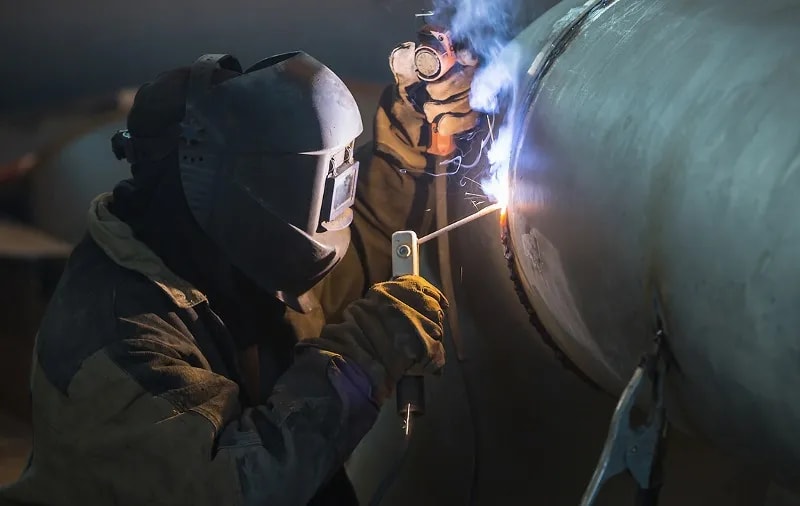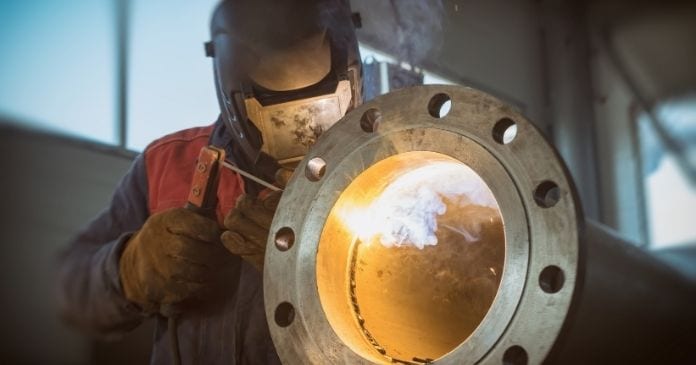Everything about Welding: Trick Insights Into Techniques and Finest Practices for Success
Welding encompasses a range of methods, each fit for specific materials and applications. Comprehending these approaches, such as GMAW, SMAW, and TIG, is vital for achieving optimal results. The best devices and security methods can not be neglected. As prep work and troubleshooting play vital duties in the welding procedure, understanding these elements can substantially enhance the high quality of the last item. What are the essential variables that guarantee an effective weld?
Recognizing Different Welding Strategies
Welding methods include a selection of techniques, each fit to details applications and materials. Among the most common methods are Gas Metal Arc Welding (GMAW), Protected Metal Arc Welding (SMAW), and Tungsten Inert Gas Welding (TIG) GMAW, also known as MIG welding, is popular for its speed and versatility, making it suitable for thin materials. SMAW, or stick welding, is favored for its simplicity and effectiveness in outdoor environments, especially with thicker metals. TIG welding offers precision and control, making it appropriate for intricate job and non-ferrous steels (Montana Mobile Welding and Repair Fabrication). Each strategy has its distinct advantages and factors to consider, permitting welders to select the finest method based upon the task's needs, product kind, and wanted end results. Understanding these techniques is vital for successful welding
Vital Welding Tools and Tools
While different welding methods require details abilities, the right tools and devices are similarly essential for achieving top quality outcomes. Necessary welding equipment includes welding equipments, which differ depending upon the method-- such as MIG, TIG, or stick welding. Safety gear, including headgears, handwear covers, and aprons, assurances safety and comfort during the procedure. On top of that, components and clamps aid secure materials in position, making sure precision in welds. Consumables like welding poles, wire, and protecting gas are likewise vital parts that affect the top quality of the weld. Tools such as grinders and cutters promote surface area preparation and post-weld finishing, adding to a specialist result. Buying high-quality equipment ultimately improves the performance and performance of welding projects.
Security Practices in Welding
Appropriate security techniques are vital in the welding sector to secure workers from possible threats. Welders have to use appropriate individual safety tools (PPE), including headgears with appropriate shading, gloves, and flame-resistant clothing. Appropriate air flow is essential to minimize direct exposure to dangerous fumes and gases generated during the welding process. In addition, workers must be learnt the correct handling of welding devices to avoid accidents. Fire precaution, such as keeping combustible products far from the welding location and having fire extinguishers conveniently offered, are needed. Regular inspections of devices and work areas can aid recognize potential risks prior to they result in mishaps. By adhering to these safety and security methods, welders can develop a safer working setting and reduce threats associated with their profession.
Preparing Materials for Welding
Preparing products for welding is an important action that significantly influences the quality and honesty of the end product (Welding). Appropriate preparation entails cleaning up the surface areas to get rid of contaminants such as oil, corrosion, and dust, which can compromise the weld. Methods such as grinding, fining sand, or using solvents are commonly used to attain a tidy surface area. Additionally, making certain that the products mesh snugly is necessary; spaces can result in weak welds. It's likewise crucial to consider the placement and positioning of the components, as this will certainly impact the convenience of welding and the last outcome. Ultimately, selecting the appropriate filler product and making sure compatibility with the base steels is vital for accomplishing solid, sturdy welds
Tips for Achieving High-Quality Welds
Attaining top notch welds requires focus to information and adherence to best techniques throughout the welding process. Correct joint prep work is vital, guaranteeing surface areas are tidy and free from impurities. Picking the ideal filler product and welding technique based on the base metals is critical for perfect bonding. Preserving regular traveling speed and angle while welding can protect against defects and advertise harmony. Furthermore, controlling warm input is necessary; excessive warm can cause warping and deteriorated joints. If necessary, regularly evaluating the welds throughout the process enables for prompt changes. Ultimately, employing appropriate post-weld therapies, such as cleansing and tension relief, can enhance the sturdiness and honesty of the weld, inevitably guaranteeing an effective end result.
Fixing Common Welding Issues
Welding often provides challenges that can affect the quality and honesty of the end product. Common concerns such as porosity, irregular weld grains, and getting too hot can emerge, each needing specific fixing techniques. Comprehending these troubles is essential for welders to enhance their abilities and attain perfect results.
Porosity Issues Clarified
Although porosity can usually be forgotten, it continues to be a crucial issue in welding that can jeopardize the honesty of a completed item. Porosity refers to the presence of little gas pockets within the weld grain, which can deteriorate the joint and lead to early failure. This problem usually emerges from pollutants, dampness, or inappropriate securing gas insurance coverage during the welding procedure. To reduce porosity, welders should validate that the base materials are tidy and completely dry, make use of suitable shielding gases, and keep consistent welding parameters. Frequently evaluating the tools and environment can also aid identify possible problems before they show up in the weld. Dealing with porosity efficiently is essential for achieving solid, durable welds that meet high quality requirements.

Inconsistent Weld Beans
Inconsistent weld grains can greatly affect the top quality and strength of a completed item. Different factors contribute to this problem, including inappropriate traveling speed, incorrect amperage settings, and inconsistent electrode angles. When the welder relocates also quickly, a grain may show up slim and do not have penetration, while moving as well slowly can cause excessive buildup. Additionally, utilizing the wrong amperage can result in either try this out damaging or excessive spatter, both of which compromise weld stability. The welder's strategy, such as irregular torch movement, can also lead to irregular bead appearance. To mitigate these problems, welders ought to concentrate on preserving consistent, regulated motions and making certain correct devices settings to attain harmony in their welds. Consistency is vital to attaining reputable and solid welds.
Getting Too Hot and Bending Issues
Too much heat throughout the welding process can lead to significant getting too hot and contorting issues, impacting the structural honesty of the workpiece. These problems usually show up as distortion, which can compromise positioning and fit-up, making more setting up challenging. Factors adding to overheating consist of the choice of welding specifications, such as voltage and take a trip rate, along with the sort of product being welded. To minimize these concerns, welders ought to keep consistent travel rate and ideal warmth input while keeping track of the workpiece temperature level. Additionally, this hyperlink preheating or post-weld heat treatment can help minimize tensions brought on by fast air conditioning - Belgrade Welding. Routine inspection and adherence to finest methods are essential in preventing getting too hot and making certain the longevity and integrity of welded structures
Regularly Asked Concerns
What Are the Occupation Opportunities in the Welding Market?
The welding market supplies varied career opportunities, consisting of placements as welders, teachers, designers, and examiners. Experts can function in manufacturing, building and construction, aerospace, and automobile markets, taking advantage of solid need and affordable incomes in various functions.
Exactly How Can I Improve My Welding Speed Without Sacrificing High Quality?
To improve welding speed without giving up high quality, one must practice efficient strategies, keep tools, enhance setups, and improve hand-eye sychronisation. Routine training and looking for feedback can likewise substantially add to accomplishing faster, top quality welds.
What Certifications Are Available for Welders?
Various accreditations exist for welders, including those from the American Welding Culture (AWS), the National Facility for Building Education and Research (NCCER), and numerous industry-specific companies. These qualifications improve employability and demonstrate ability effectiveness.
Just How Does Welding Affect the Features of Metals?
Welding influences the properties of steels by modifying their microstructure, which can lead to adjustments in hardness, strength, and ductility. Warmth input and air conditioning rates throughout the process substantially impact these product features.
Can I Bonded Dissimilar Metals Together?
